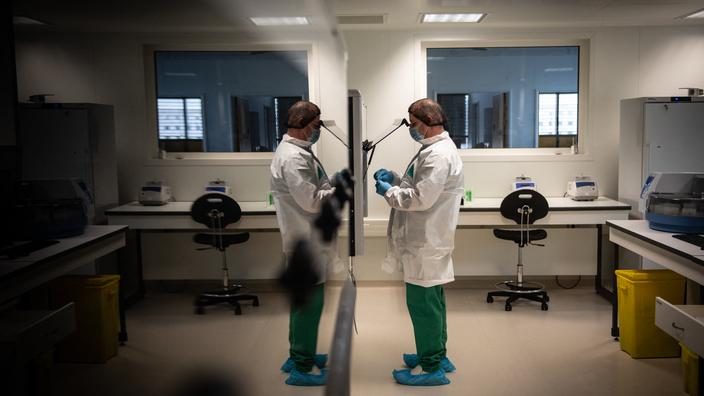The boss of the Criminal Squad, Michel Faury, pleads to keep the unknown DNA fingerprints for longer, until the statute of limitations for the crimes.
This reform proposal, which appears in an administrative report according to the weekly, "
would be useful not for the mass of cases, but for the small number of mysterious crimes on which we have no elements of investigation
", explains he said, or about thirty crimes.
Read also: Omar Raddad case: justice reopens the case
In the Automated Fingerprint File (Faed), fingerprints for the most serious crimes are kept for 25 years, and 40 years in the National Automated DNA File (Fnaeg).
“
Four decades before removing a trace, that may sound like a lot.
But that's not always enough.
Hence our proposal to wedge the withdrawal of all traces, in an unresolved case, on the limitation date
", indicated Michel Faury interviewed in the JDD, adding that"
in this way, the Fnaeg would be consistent with the rules prescription of the police investigation
”.
Cold cases
"
In general, there remain one to two cases per year, cold cases, which join the sixty cases handled in particular by the Criminal and Behavioral Analysis Unit of Complex Cases (UAC3)
", he said. for follow-up.
"
What a pity to cut your wings by removing too quickly from the file unknown traces or the fingerprints of people who have acted very young and who risk reoffending
".
To read also Murder of Karine Leroy in Seine-et-Marne: "the track of the '' hailed '' is not the only one on which the investigators are working"
To support his argument, the boss of the criminal brigade takes the example of François Vérove, a former police officer and gendarme, identified as the "
Hail
", a killer and serial rapist wanted since the 1980s and suspected of five crimes committed between 1986 and 1994. His DNA turned out to match the genetic profile found at several crime scenes, explained the Paris prosecutor's office.
“
The DNA trace found at crime scenes in 1986 was not integrated into the Fnaeg until 2000, two years after the creation of this file.
It could not therefore be deleted before 2040, which gave us leeway.
But if the file had existed in 1986 and if it had been integrated immediately, as is the case today, the deadline would have been 2026
”, commented the head of the criminal brigade.














